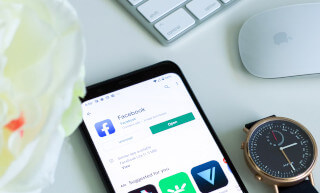Updated: 19 August 2025
Table of Contents
During the height of the COVID-19 pandemic, schools around the world were forced to shut their doors. With face-to-face classes suspended, both students and teachers had to look for alternative ways to stay connected. One platform stood out more than the rest—Facebook.
But what role does Facebook really play in education? Can it be an effective learning tool, or does it come with hidden drawbacks, especially on the psychological well-being of students?
In this article, we’ll explore how Facebook became a go-to platform for education during the pandemic, the advantages and disadvantages of using social media for learning, and what research says about its impact on students’ motivation, focus, and mental health.
About Facebook for Educational Purposes
Out of all the social media platforms, Facebook remains the most widely used, with billions of active users scrolling through their feeds every single day. For many people, Facebook is more than just a place to connect with friends—it has become part of daily life.
One reason for this continued growth is that Facebook adapts to the needs of its users. Over time, the platform has transformed from a simple networking site into a powerful tool for communication, community building, and even education. In fact, Facebook for learning has become especially relevant among students. It has surpassed all expectations and has evolved to meet its growing user base (Mohsin, 2021).
According to recent statistics, Facebook has over 1.8 billion daily users, making it the most popular social media platform worldwide. Surveys also show that a significant percentage of these users are students. For example, the Pew Research Center notes that more than 70% of users are either in high school or college, which means that young people are among the most engaged on the site.
Now here’s the interesting part: while most people use Facebook for entertainment or social interaction, more and more students are discovering that Facebook for education offers real opportunities. From joining study groups to accessing learning resources and even attending virtual classes, students are finding ways to turn their time online into something productive.
Technology has already reshaped how today’s learners think and behave. If students are naturally drawn to social media, why not guide them toward using it for educational purposes?
Facebook as a Means of Communication
Even after schools reopened and face-to-face classes returned, Facebook Messenger continues to play a big role in education. What started as a quick fix during the pandemic has now become a permanent part of how students, teachers, and even organizations communicate. Messenger is no longer just for casual chats—it has evolved into a practical tool for learning and collaboration.
So, what makes Messenger so appealing in an educational setting? Why do students and teachers still rely on it when there are many other apps available?
Here are some of the features that make Messenger for education effective:
- Instant communication – Students and teachers can exchange messages in real time, which helps with clarifying lessons, submitting tasks, or asking quick questions.
- Group chats – Class groups allow easy sharing of announcements, schedules, and study materials.
- File sharing – Messenger supports photos, videos, and documents, making it convenient for submitting assignments or sharing resources.
- Accessibility – Since almost everyone already has a Facebook account, Messenger becomes the default, hassle-free choice for communication.
- Integration with Facebook groups – Messenger works seamlessly with Facebook’s study or school groups, creating a smooth flow between classroom communities and private conversations.
From these features, it’s easy to see why many students still prefer using Messenger as part of Facebook for learning. It blends the familiarity of social interaction with practical tools for schoolwork and collaboration, bridging the gap between personal and academic life.
Messenger Features Used in Educational Activities
Even in the post-pandemic era, Facebook Messenger remains a vital communication tool in education. What once served as a lifeline for distance learning has now become a permanent fixture in how students, teachers, and even parents exchange information.
This is especially important in the Philippines, where the Department of Education (DepEd) continues to implement blended learning. Alongside printed modules, online tools, and even radio and TV-based instruction, Facebook for education provides a convenient digital space for communication and collaboration.
Messenger makes it easier for students to ask questions, gather information, and even brainstorm with classmates. Instead of relying only on Google or Wikipedia, they can create study groups, share resources, and discuss lessons in real time. Teachers and student organizations also use Facebook Groups and Messenger to announce events, coordinate projects, and keep everyone updated with just a few taps.

For schools, Facebook is more than just a social platform—it has become an efficient communication channel. Instead of handing out flyers or printed notices, administrators can post announcements instantly, whether it’s class suspensions, schedule changes, or campus events. Teachers, on the other hand, use Facebook Live and integrated apps to conduct webinars, counseling sessions, and even flag ceremonies online.
In short, Facebook for learning has become deeply embedded in school life. While the pandemic accelerated its adoption, its convenience and wide reach ensure that it continues to support education today—not just for entertainment, but as a tool for building stronger connections between students, teachers, and schools.
Group Chats
One of the most popular features of Facebook Messenger for education is the use of Group Chats (GCs). Instead of sending individual text messages, teachers and students can communicate with an entire class at once. This makes Messenger GCs far more convenient than the old “text brigade” or group SMS blasts.
For students, group chats provide a space to share files, links, and study notes instantly. They can collaborate on projects, review lessons together, or simply remind each other about upcoming deadlines. Teachers also find GCs useful for posting homework instructions, sending images of learning materials, or making quick announcements without the need for formal platforms.
The appeal of Messenger group chats lies in their simplicity and accessibility. Since almost every student already uses Facebook and Messenger daily, these groups blend naturally into their routines, making learning updates easy to access and hard to miss. In this way, Facebook for learning continues to support collaboration and communication beyond the classroom walls.
Facebook Pages and Group Page
There is also a Facebook Pages and Group Page feature, where you can upload and download soft copies, pdf, and other files—of advanced lessons, forms to fill up, and other matters.
On Facebook, you can also develop your language, do a group collaboration and improve your skills in literacy. So don’t underestimate Facebook, because on another side it’ll help you in Education Matters.
Pros of using Facebook
Facebook is very convenient to use for students, teachers, and parents since most people are familiar with Facebook and had engaged in it. And it does not cost a high amount. The user just needs a data subscription to make it work.
Not like in text messages, you need a load to send a message to someone. It also has many features to use, not just what they purposely made for entertaining people but also to educate them.
Cons of using Facebook
Not all are privileged and capable of having a cellular phone to use. There are also places wherein signals are poor.
Also, sometimes Facebook easily distracts students because of its entertainment and other features, not just in communicating with their teachers. While Facebook for educational purposes has its benefits, the other features are distracting the acquisition of knowledge itself.
It is indeed helpful to know Facebook’s limitation of usage and possible harm it can give when not using it mindfully.
Social Media’s Mental Effects
In general, we should be aware that social media can hurt our mental health.
Bailey Parnell, a social media expert and one of Canada’s Top 100 Most Powerful Women, explains in a viral video how social media can cause and enhance anxiety, depression, and stress among students. She identified four of the most common stressors or causes of these mental health conditions that result from too much social media exposure.
Given this information, it would be best to strike a balance in your way of life. Give time off to disconnect yourself from social media channels and live a life of freedom once in a while. Doing so will surely redound to your benefit.
Engage more in safe social media by preventing the harmful effects and developing your strategies to cope with negativity. You are your best friend.
Sources
- Iqbal, M. (2021). Facebook Revenue and Usage Statistics (2021).
- Mohsin, M. (2021). 10 Facebook statistics every marketer should know in 2021.
- Quinones, M. T. (2020). DepEd clarifies blended, distance learning modalities for SY 2020-2021




Thank you for sharing